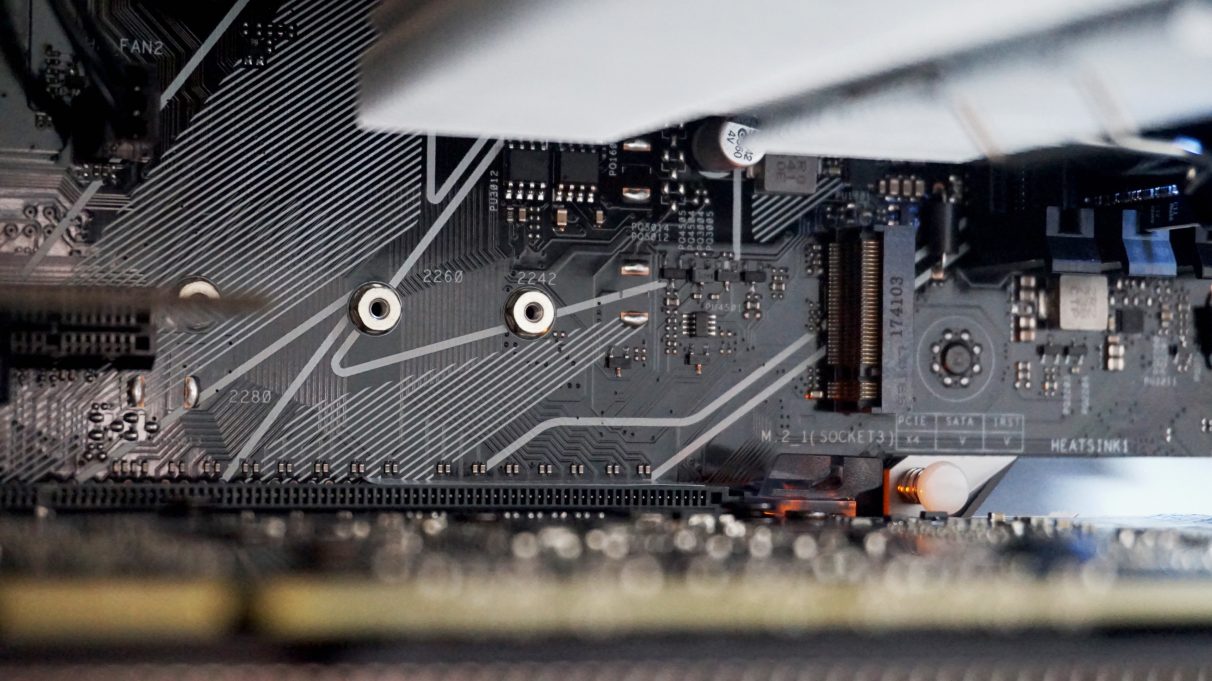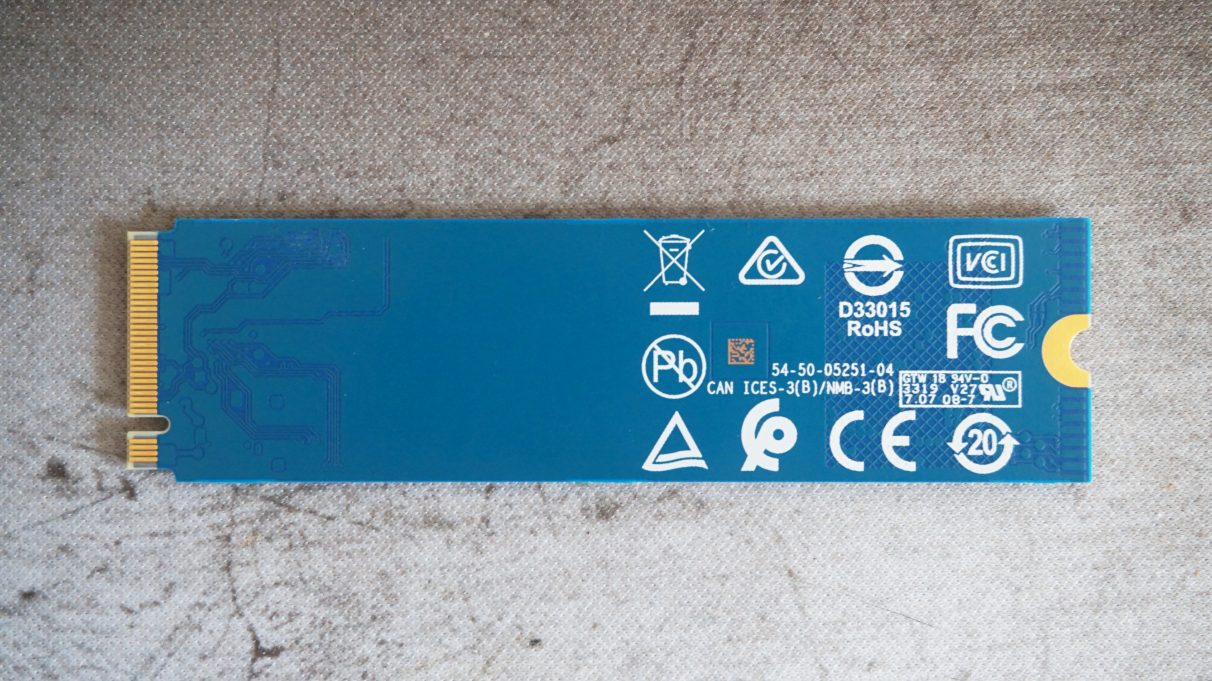Available in 250GB, 500GB and 1TB sizes, the Blue SN550 is even better than its predecessor, improving on its already nippy random write speeds and strengthening its ability to deal with heavy workloads. It’s such good value, in fact, that you’re probably better off buying this than literally every other SSD on the planet right now - including cheap SATA drives. Here’s wot I think. Priced at £50 / £67 / £125 in the UK and $55 / $70 / $120 in the US, the WD Blue SN550 isn’t just faster than the best SATA drives out there right now - it’s also significantly better value. Indeed, its 250GB and 500GB models are only a couple of quid more than my current budget SATA recommendation, the Crucial MX500, and they’re both significantly cheaper than my top SATA pick, the Samsung 860 Evo, particularly once you move up to 1TB. You will, of course, need a motherboard that supports NVMe SSDs to make use of the WD Blue SN550 (see the picture below), but most modern motherboards come with at least one M.2 slot, if not more. As a result, anyone who’s upgraded their PC in the last couple of years should be good to go. Plus, you don’t need to worry about connecting it up to your PC’s power supply since it draws all the power it needs directly from the motherboard. Provided you’ve got a compatible motherboard, then, the WD Blue SN550 is a great choice for your SSD. When I tested the drive using AS SSD’s 1GB random 4K test, for example, which randomly reads and writes 1GB worth of tiny 4K files to simulate the kind of speeds you can expect to see from everyday use of the drive, it returned a score of 44.6MB/s read and 157.3MB/s write. Those are fantastic scores for an SSD of this price, beating the Crucial MX500’s respective scores of 36.MB/s read and 72.7MB/s write by quite a substantial margin. It also trumps the more expensive Samsung 860 Evo, too, which only managed 40.3MB/s read and 98.2MB/s write in the same test. In fact, the WD Blue SN550’s random speeds are so impressive that it actually runs the risk of cannibalising WD’s own high-end gaming SSD, the Black SN750. The SN750 still comes out on top for write speed, all told, thanks to its score of 167.1MB/s, but its read speed of 45.0MB/s is effectively identical, showing you needn’t fork out loads of cash to get a great SSD. The WD Blue SN550’s random speeds also beat other cheap NVMe drives such as the Adata XPG SX6000 Pro and Crucial P1. Admittedly, the Crucial P1 has a slightly faster read speed of 55.4MB/s, but that’s really the drive’s only virtue. Indeed, when I moved on CrystalDiskMark’s more intensive random 4K 8-queue-8-thread test, the WD Blue SN550 came out streaks ahead of its budget NVMe rivals, finishing the test with an impressive 1413.6MB/s read speed and a 1433.8MB/s write speed. Compare that to the Crucial P1’s 363.1 and 911.4MB/s respective scores, and it’s clear the WD is the superior drive overall. As for how it compares to its budget SATA competition, let’s just say that even the Samsung 860 Evo can’t muster much more than 400MB/s in this test, which just makes the benefits of moving up to an NVMe even more stark.
Yes, the WD Blue SN550 still has some way to go before it matches higher-end NVMe drives in this kind of work-heavy test - the WD Black SN750’s scores hover around the 1500MB/s mark while the Samsung 970 Evo Plus pushes things even higher toward the high 1600s - but it’s still pretty damn fast for the money. As a result, anyone with the right motherboard looking to upgrade their PC’s storage should absolutely have the WD Blue SN550 at the top of their component list. There’s simply nothing better at this end of the NVMe spectrum, and its competitive prices of £50 / £67 / £125 in the UK and $55 / $70 / $120 in the US make it much better value for money than almost every SATA drive out there as well. If you’ve ever asked yourself which SSD you should buy, this is the answer. For more of the best prices on today’s SSD deals - including the WD Blue SN550 - check out our regularly updated SSD deals page.

